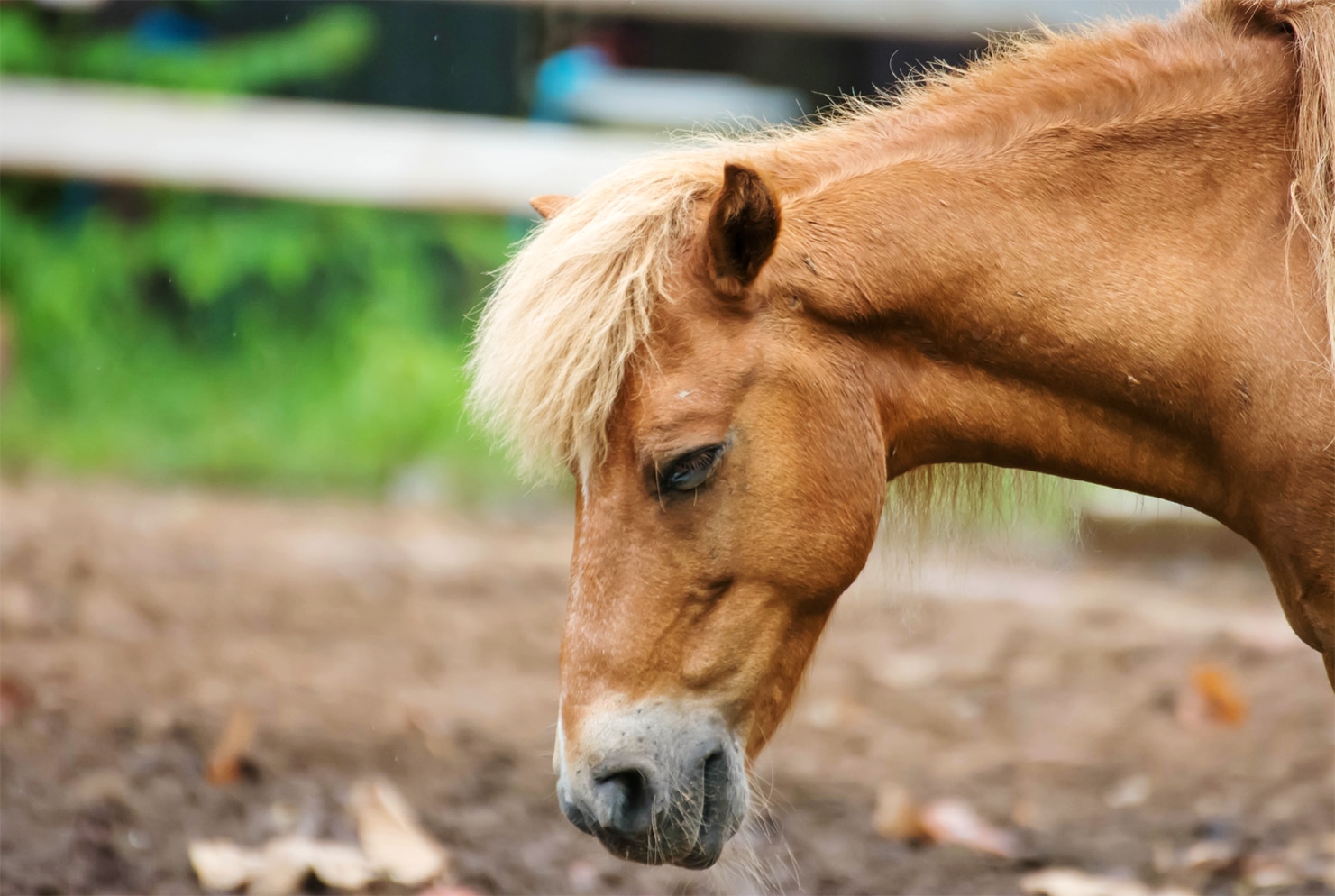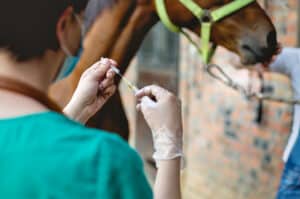
Strangles: a biochemical war
Caused by infection with S. equi bacteria, strangles is highly contagious and understanding how it functions is vitally important, writes DR DOUG ENGLISH.
Strangles, a highly contagious infection of the upper respiratory tract, understandably incites widespread concern among equine practitioners, owners, and breeders due to its debilitating nature and the severity of its impact. Characterised by swollen lymph nodes, nasal discharge, fever, and abscess formation, strangles owes its potent infectious capability to the bacterium Streptococcus equi subsp. equi (S. equi).
Biochemistry of S. equi
Strangles is a globally occurring disease and is the most commonly occurring infection in horses from six to ten years old. Infection can occur through either inhalation or ingestion of the bacterium, through contact with an infected horse, access to contaminated water, or coming into contact with infected equipment or materials.

The intricate biochemical mechanisms used by S. equi offer a fascinating yet concerning journey into the process by which strangles develops. In order to establish an infection, S. equi adheres to the host’s mucosal surfaces using proteins to bind itself to tissues, primarily within the upper respiratory tract.
Yet another binding protein plays a crucial role in the colonisation phase of the infection, by assisting the bacterium to adhere to the epithelial cells (the cells that form the outer surface of organs and blood vessels throughout the body).
Once established, the bacteria are able to cross between mucous membranes within the nose and mouth, subsequently infecting the lymph nodes, which may result in abscesses that can eventually rupture. Strangles derives its name from the pressure exerted on the upper respiratory tract by infected and swollen lymph nodes. The swollen nodes can restrict the airway, even to the point of causing death.
Some bacteria in the body are commensals: bacteria that produce signals that inhibit the growth of pathogens, or are able to act on their host’s immune system to produce a protective response that prevents the spread of infection. Streptococcus spp. bacteria live as commensals on the mucosae of the upper respiratory tract or the lower urogenital tract with the potential to cause opportunistic infections. In contrast, S. equi, which is a subspecies of Streptococcus, is not commensal, rather it is a host-restricted pathogen (one that can only survive and reproduce in a specific host) which causes infection of the respiratory system.
Evasion of immune response
- equi has the capacity to circumvent the host’s immune response by disrupting normal cellular metabolism and undermining the host’s ability to destroy infected cells. Driven by S. equi’s ability to circumvent the host’s defences and propagate within the lymph nodes, the infection can then continue unchecked with the formation of abscesses.

After an incubation period of up to eight days, the symptoms of strangles begin to appear. They include lethargy, fever, anorexia, nasal discharge, and swollen lymph nodes likely to be accompanied by abscesses. However, the sudden onset of fever, which can occur as quickly as two days after infection, is often the first symptom. A nasal discharge follows, and swelling of the lymph nodes generally appears at around seven days following infection.
Laboured breathing and difficulty in swallowing (which may cause anorexia, a loss of appetite) indicate that the respiratory tract is being obstructed as the lymph nodes enlarge. Abscesses can rupture between seven and twenty-eight days after infection. Bastard strangles, a complication of the disease, occurs when abscesses form in other lymph nodes, including the abdomen and brain.
Vaccination & immune memory
Attenuated & purified protein vaccines
Vaccination strategies, using attenuated live strains or purified protein, seek to establish a foundation of immune memory and responsiveness. Unfortunately however, vaccine-induced protection is often constrained by S. equi’s immune evasion tactics.
DNA based vaccines
Emerging modalities, such as DNA-based vaccines, are being researched for their potential to stimulate durable and broad-spectrum immunity against S. equi, sidestepping the limitations that have been observed with conventional vaccine approaches.
Antibiotic Strategies
Antibiotic intervention is fundamental to managing outbreaks and reducing the severity of the disease. Penicillin and other similar antibiotics are often employed in strangles management, targeting the bacterial cell wall in order to curb S. equi proliferation.
Disinfection
Winter weather, characterised by low temperatures and high humidity, extends the survival time of S. equi, as evidenced by the bacteria’s prolonged presence on items such as shoe soles and buckets. When making decisions regarding isolation and disinfection measures, it is vital to keep in mind that humid conditions favour the bacteria’s growth and survival in the environment. Some research suggests a much longer survival time than previously thought: an average of between two and nine days depending on the season. However, survival for up to 34 days was observed during winter at damp and humid locations.
- equi remains viable in water for four to six weeks, but not in faeces or in the soil. Recent studies using real-world scenarios showed that the bacteria died rapidly (one to three days) on fencing and soil, and did not readily survive when in the presence of other soil-borne bacteria.
There is evidence of longer survival times on halters made of synthetic materials as opposed to leather. However, soaking in detergent and water hotter than 60°C for longer than 10 minutes effectively eliminated the bacteria.
Strangles perpetuates its existence, severity and harmfulness through a combination of intricate biochemical interactions, immune evasion, and exploitation of the host’s physiological responses. Understanding S. equi’s biochemical underpinnings enables a more nuanced approach toward therapeutic and preventative strategies.
Caring for a horse with strangles
Horses with strangles often recover fully. However, complications can occur in a small percentage of cases, potentially resulting in a mortality rate of up to 40 per cent. Some horses that appear healthy can become carriers of S. equi, randomly shedding the bacteria and perpetuating the spread of the disease.
Generally, strangles is best treated with rest and care. The horse should be monitored by your vet so adequate pain management can be administered. Additionally, as their owner, you will need to ensure their intake of food and water is adequate.
In the case of a lymph node abscess, treatment may include hot poulticing or the topical application of a drawing salve. Once the abscess has burst, your vet may recommend flushing the abscess with an antiseptic/disinfectant solution. A non-steroidal anti-inflammatory (NSAID) can be useful to reduce swelling. If no antibiotics are administered, many horses develop long-term immunity to strangles.
Quarantining the infected horse is vital, and no horse should be taken off (or be allowed onto) the property until all horses currently at that location test negative.



